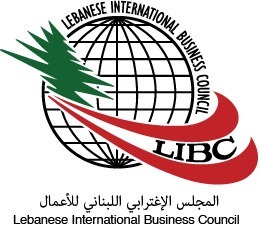World Bank Cuts 2016 Global Growth Forecast to 2.4 percent
The World Bank is downgrading its 2016 global growth forecast to 2.4 percent from the 2.9 percent pace projected in January. The move is due to sluggish growth in advanced economies, stubbornly low commodity prices, weak global trade, and diminishing capital flows.
According to the latest update of its Global Economic Prospects report, commodity-exporting emerging market and developing economies have struggled to adapt to lower prices for oil and other key commodities, and this accounts for half of the downward revision. Growth in these economies is projected to advance at a meager 0.4 percent pace this year, a downward revision of 1.2 percentage points from the January outlook.
“This sluggish growth underscores why it’s critically important for countries to pursue policies that will boost economic growth and improve the lives of those living in extreme poverty,” said World Bank Group President Jim Yong Kim, “Economic growth remains the most important driver of poverty reduction, and that’s why we’re very concerned that growth is slowing sharply in commodity-exporting developing countries due to depressed commodity prices.”
Commodity-importing emerging markets and developing economies have been more resilient than exporters, although the benefits of lower prices for energy and other commodities have been slow to materialize. These economies are forecast to expand at a 5.8 percent rate in 2016, down modestly from the 5.9 percent pace estimated for 2015, as low energy prices and the modest recovery in advanced economies support economic activity.
Among major emerging market economies, China is forecast to grow at 6.7 percent in 2016 after 6.9 percent last year. India’s robust economic expansion is expected to hold steady at 7.6 percent, while Brazil and Russia are projected to remain in deeper recessions than forecast in January. South Africa is forecast to grow at a 0.6 percent rate in 2016, 0.8 of a percentage point more slowly than the January forecast.
A significant increase in private sector credit – fueled by an era of low interest rates and, more recently, rising financing needs — raise potential risks for several emerging market and developing economies, the report finds.
“As advanced economies struggle to gain traction, most economies in South and East Asia are growing solidly, as are commodity-importing emerging economies around the world,” said World Bank Chief Economist and Senior Vice President Kaushik Basu. “However, one development that bears caution is the rapid rise of private debt in several emerging and developing economies. In the wake of a borrowing boom, it is not uncommon to find non-performing bank loans, as a share of gross loans, to quadruple.”
In an environment of anemic growth, the global economy faces pronounced risks, including a further slowdown in major emerging markets, sharp changes in financial market sentiment, stagnation in advanced economies, a longer-than-expected period of low commodity prices, geopolitical risks in different parts of the world, and concerns about the effectiveness of monetary policy in spurring stronger growth.
The report introduces a tool to quantify risks to the global outlook and finds that they are now more tilted to the downside than in January.
“Flagging growth prospects in emerging markets and developing economies would slow or even reverse their progress in catching up to income levels of advanced economies,” said Development Economic Prospects Group Director Ayhan Kose. “However, some commodity-importing emerging and developing economies have been able to register steady or accelerating growth over the last three years.”
Regional Outlook
East Asia and Pacific: Growth in the East Asia and Pacific region is projected to slow to an unrevised 6.3 percent rate in 2016, with China’s expansion expected to ease to 6.7 percent, as projected in January. The region excluding China is projected to growth at 4.8 percent in 2016, unchanged from 2015. This outlook assumes an orderly growth slowdown in China accompanied by steady progress on structural reforms and appropriate policy stimulus as needed. Growth in the rest of the region is expected to be supported by rising investment in several large economies (Indonesia, Malaysia, Thailand), and strong consumption supported by low commodity prices (Thailand, the Philippines, Vietnam).
Europe and Central Asia: The continuing contraction in Russia is keeping the forecast growth rate for the region at 1.2 percent in 2016, a 0.4 percentage point downward revision from the January outlook. Geopolitical concerns, including flare-ups of violence in eastern Ukraine and the Caucasus and terror attacks in Turkey, weigh on the outlook. Excluding Russia, the region is expected to expand at a 2.9 percent rate. Growth projections for the eastern part of the region have been revised down from the January outlook as countries adjust to lower prices for oil, metals, and agricultural commodities. Activity in the western part of the region will benefit from moderate growth in the Euro Area and strengthening domestic demand, helped by subdued fuel costs.
Latin America and the Caribbean: The region is forecast to contract by 1.3 percent in 2016 after a 0.7 percent decline in 2015, the first back-to-back years of recession in more than 30 years. It is projected to begin expanding again in 2017, gradually gaining momentum to around 2 percent in 2018. Prospects vary across the region: South America is anticipated to contract by 2.8 percent this year, followed by mild recovery in 2017. In contrast, supported by ties to the United States and strong exports, output in the Mexico and Central America sub-region, and the Caribbean, are expected to grow at 2.7 percent and 2.6 percent respectively in 2016, and more in 2017 and 2018. Brazil is forecast to contract 4 percent in 2016, and its recession is expected to carry over into 2017, amid attempts at policy tightening, rising unemployment, shrinking real incomes and political uncertainty.
Middle East and North Africa: Growth in the region is forecast to pick up slightly to 2.9 percent in 2016, 1.1 percentage points less than expected in the January outlook. The downward revision comes as oil prices are expected to track lower for the year, at an average of $41 per barrel. The main reason for the slight improvement in regional growth in 2016 is an expected strong recovery in the Islamic Republic of Iran following the lifting of sanctions in January. An envisaged upturn in average oil prices in 2017 is projected to support a recovery in regional growth to 3.5 percent in 2017.
South Asia: Growth in South Asia is forecast to accelerate to 7.1 percent in 2016, despite weaker-than-expected growth in advanced economies, which has dampened export growth in the region. Activity has remained resilient as domestic demand, the main driver of growth, remained robust. India, the region’s largest economy, showed strengthening activity, as did Pakistan, Bangladesh and Bhutan. Most South Asian economies have benefitted from the decline in oil prices, low inflation, and steady remittance flows.
Sub-Saharan Africa: Growth in Sub-Saharan Africa is forecast to slow again in 2016, to 2.5 percent, down from an estimated 3.0 percent in 2015, as commodity prices are expected to remain low, global activity is anticipated to be weak, and financial conditions are tightening. Oil exporters are not likely to experience any significant pickup in consumption growth, while lower inflation in oil importers should support consumer spending. However, food price inflation due to drought, high unemployment, and the effect of currency depreciation could offset some of this advantage. Investment growth is expected to slow in many countries as governments and investors cut or delay capital expenditures in a context of fiscal consolidation.



التعليقات مغلقة، ولكن تركبكس وبينغبكس مفتوحة.